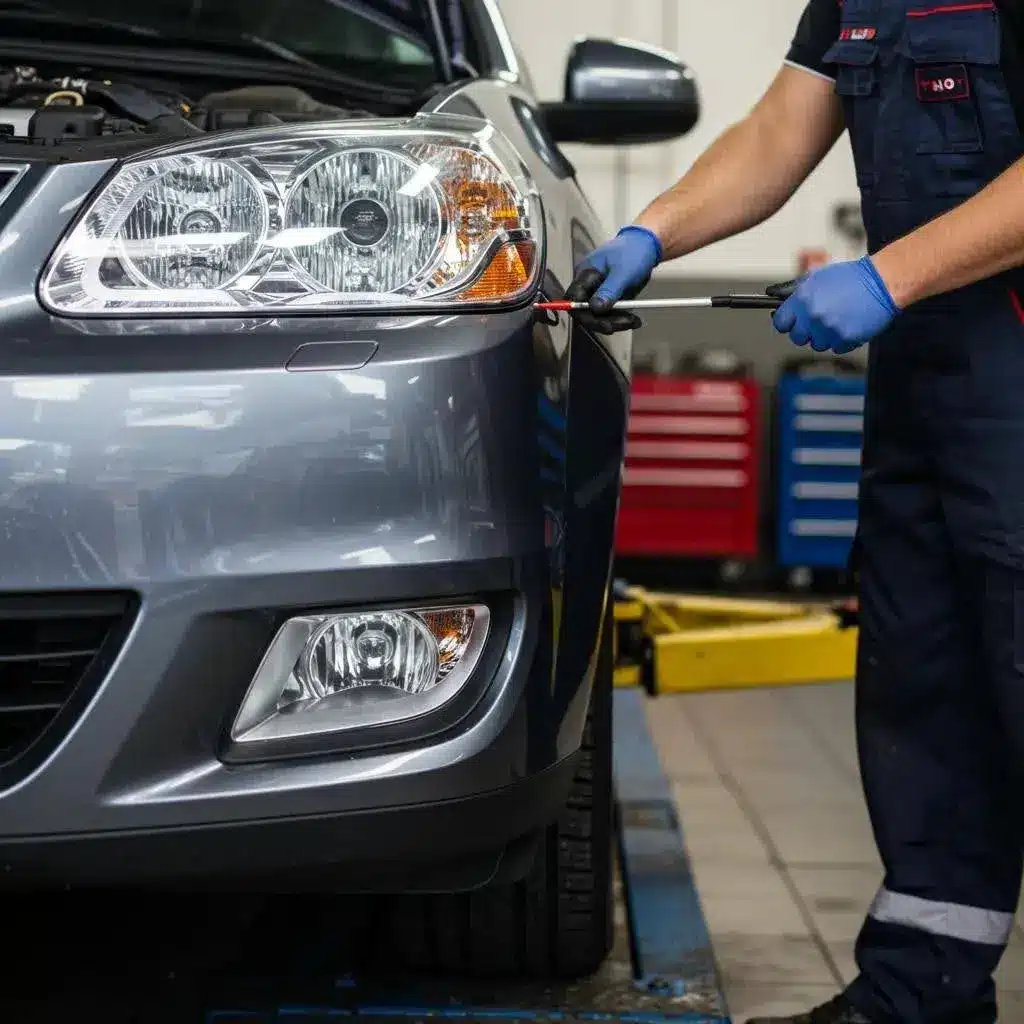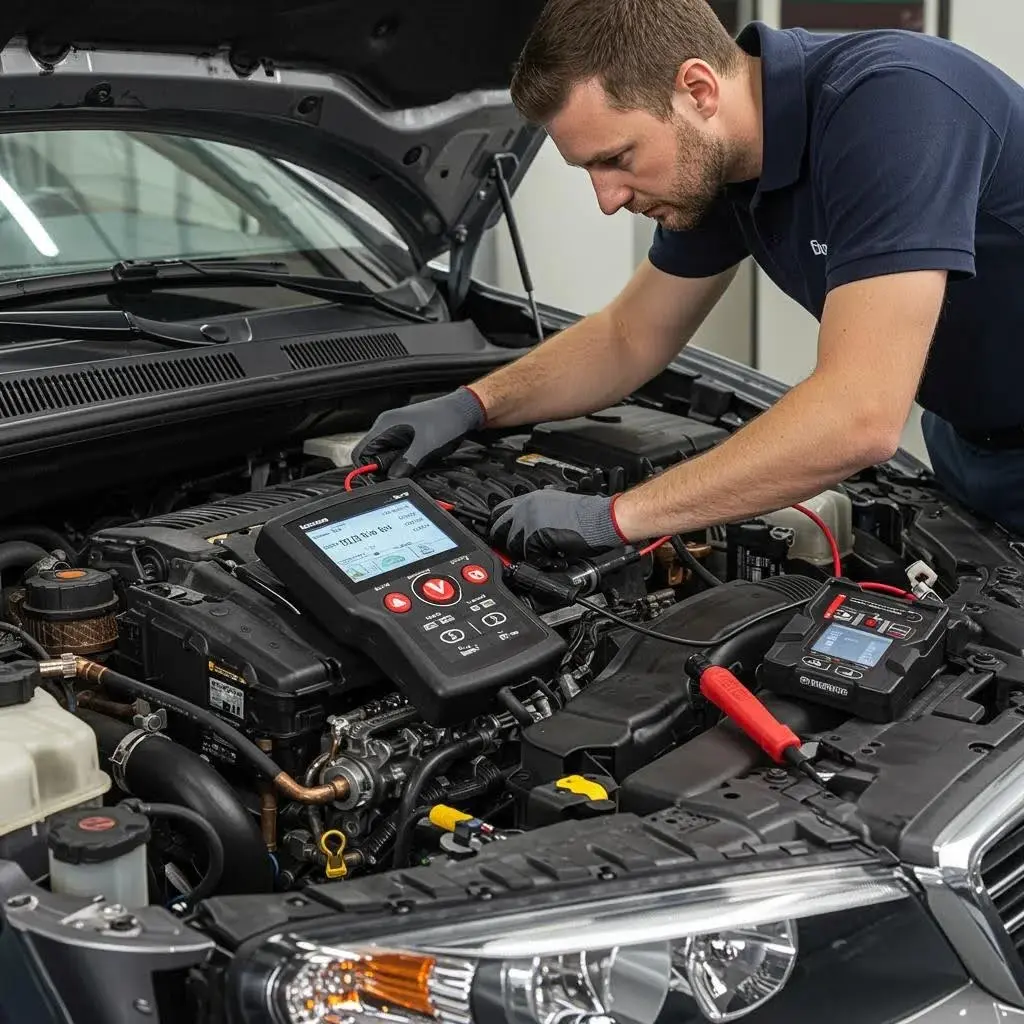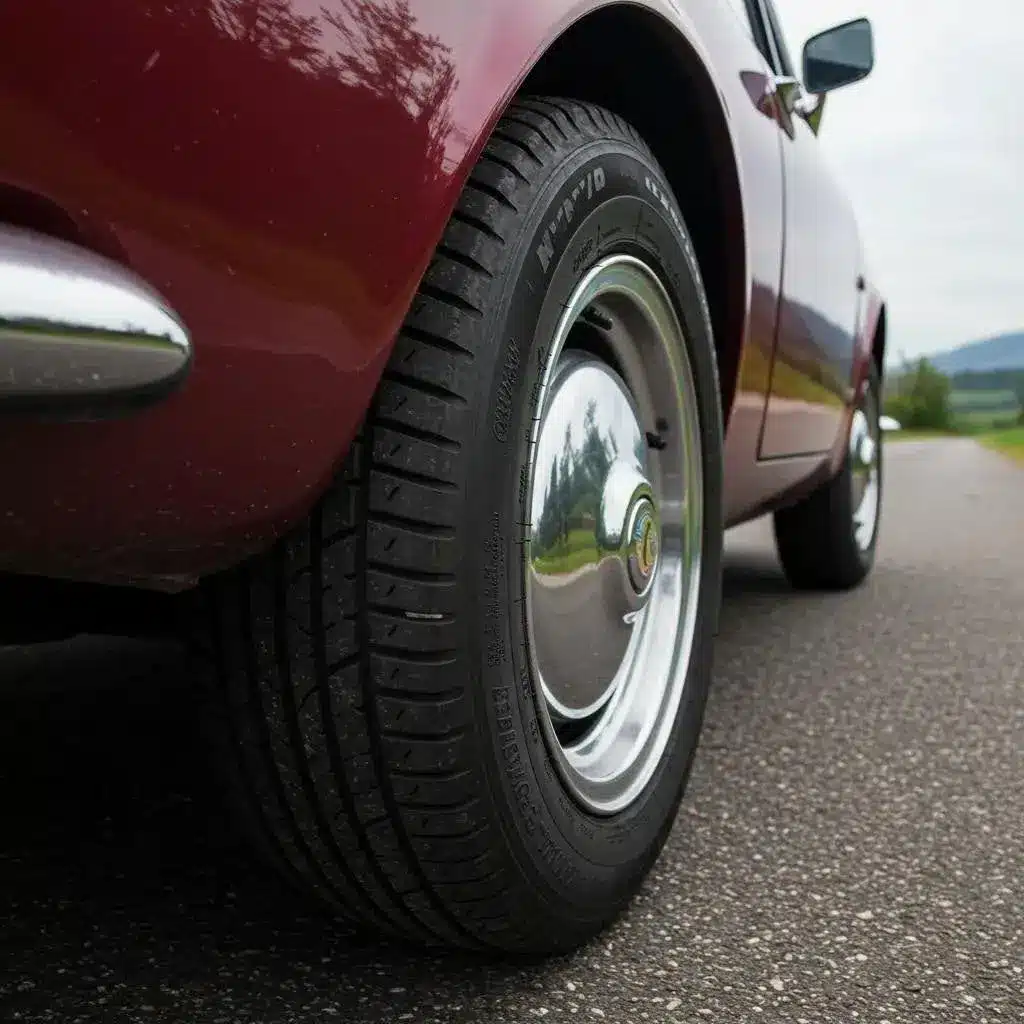
Every year in the UK, almost one in five vehicles fails its MOT test. In 2023, DVSA data reports 43.7 million MOT tests with about 22.6% failing (≈9.9 million). Understanding why your car might fail its MOT is crucial for safety, legality, and avoiding unexpected repair costs.
This guide covers the ten most common reasons, a practical pre-MOT plan, the difference between advisories and failures, and classic-car considerations, plus when to seek professional help in Tonbridge, so you can book your MOT at £54.85 with confidence.
First, we examine the primary causes of MOT failures in the UK, then outline how to prepare your vehicle for a first-time pass. Next, we explain advisories versus failures and present the top ten defect-causing components.
Classic-car owners get highlights of unique issues and how expert technicians tackle them. Finally, we cover what to do after a failure and how Sovereign Motor Engineers can support your next MOT and repairs.
Common Reasons for MOT Failure in the UK
DVSA 2022–23 data indicates ~11.41% for lamps/electrical, 8.67% for suspension, 6.66% for brakes, and 6.23% for tyres; lamps account for ~25.8% of recorded defects. These categories alone represent nearly one-third of all test failures, underscoring the importance of regular maintenance and pre-test inspections.
Preventing these issues begins with basic checks and timely repairs. By spotting common patterns, failed bulbs, worn dampers, thin pads, or low tread, you can fix minor faults before they escalate.
This proactive approach boosts pass rates and reduces the risk of dangerous defects on the road. The next sections show what to check and how to address common problems.
Suspension Problems Leading to MOT Failure

Suspension components absorb road shocks and maintain tyre contact for steering control. Defects arise when shock absorbers leak, springs sag, or ball joints wear excessively. These faults lengthen stopping distances, reduce handling precision, and can cause metal-on-metal noises.
Key suspension failure indicators include:
- Visible fluid leaks on the shock absorbers.
- Uneven ride height from weakened springs.
- Excessive play in anti-roll bar links or drop links.
- Corroded or bent suspension mountings are at risk of failure.
Timely replacement of dampers and springs restores ride comfort and stabilises tyre contact. A well-maintained suspension supports optimal braking and steering, leading into the next critical system: brakes.
Brake System Defects Resulting in MOT Failure
Brakes are the most safety-critical component on any vehicle. MOT failures occur when pads wear below minimum thickness, discs develop deep scoring, or fluid leaks compromise hydraulic pressure. Defects are classed as major or dangerous if stopping power is insufficient or brake imbalance exceeds limits.
Typical brake faults include:
- Pads worn to the indicator or below the manufacturer’s minimum, contaminated, or insecure pads will also fail.
- Disc or drum wear beyond the manufacturer’s tolerance, causing vibration.
- Leaking caliper seals or flexible hoses reduces hydraulic efficiency.
- Air in the brake circuit leads to a spongy pedal feel.
Regular brake fluid flushes, pad replacement, and disc servicing keep the system within DVSA parameters. These steps ensure prompt stopping and safe control, preparing you for the next category: tyres.
Poor Visibility and Your MOT Result
Driver ”s-view components include windscreen, wipers, and mirrors. Cracks or chips larger than 10 mm in the driver’s field of vision lead to failure, as do torn or worn wiper blades that leave streaks. Incorrectly fitted or broken mirrors also fall outside compliance standards.
Common visibility defects:
- Windscreen chips exceeding tolerance in the swept area.
- Wiper blades with torn rubber that leave streaks or lines.
- Blocked or misaligned washer jets reduce cleaning performance.
- Damaged or missing mirrors prevent proper rear-view vision.
Repairing windscreen damage, fitting new wiper rubbers, and ensuring effective washer jets restores clear sightlines. Improved visibility reinforces safe braking and manoeuvring in all conditions, completing the core failure categories.
Preparing Your Car for a First-Time MOT Pass
Preparing for an MOT test combines simple checks with professional diagnostics. A thorough pre-MOT routine ensures lights, tyres, brakes, and visibility components meet DVSA standards and eliminates easily avoidable failures.
Performing a basic inspection at home can prevent minor defects from becoming major MOT faults. For best results, combine these DIY steps with a professional pre-MOT check at a reputable Tonbridge garage, where expert technicians use diagnostics to catch hidden issues before the test.
Pre-MOT Checklist Essentials
| Component | Inspection Focus | Why Essential |
|---|---|---|
| Exterior Lamps | Bulb condition and beam aim | Ensures visibility and avoids glare hazards |
| Tyre Tread and Pressure | Depth and PSI | Maintains grip, balanced braking, and steering |
| Brake System | Pad thickness and fluid | Helps ensure stopping power and hydraulic integrity |
| Windscreen & Wipers | Chip size and blade wear | Preserves clear vision in all weather conditions |
| Mirrors & Registration | Secure fit and legibility | Confirms correct rear vision and legal display |
This checklist addresses over 50% of common MOT failure reasons. Completing these inspections at least a week before testing allows time for repairs. A final professional pre-MOT check can confirm readiness and reduce last-minute surprises.
Checking Lights, Tyres, and Brakes Before Your MOT
- Switch on headlights, brake lights, indicators, and hazards, then walk around to confirm each works.
- Measure tyre tread depth at three points across the width and inflate tyres to the manufacturer’s recommended pressure.
- Press the brake pedal and check for firm resistance; remove wheels and inspect pad thickness if you have basic tools.
- Wipe the windscreen dry and operate the wipers, looking for streaks or missed sections; test the washer fluid spray pattern.
- Ensure mirrors and number plates are clean, correctly positioned, and undamaged.
These systematic checks identify early-stage defects that, left unaddressed, would lead to MOT failure. Completing this sequence builds confidence and signals when to seek a professional inspection if any irregularities arise.
Booking a Professional Pre-MOT Check in Tonbridge
If your DIY review uncovers any deficiencies, or if you prefer expert confirmation, a pre-MOT check with trained technicians in Tonbridge is recommended two to three weeks before your test date. Professional diagnostics catch hidden wiring faults, suspension play, and subtle brake fluid contamination that home checks might miss.
At Sovereign Motor Engineers, we are Tonbridge MOT specialists who inspect every critical system using calibrated equipment, offering main-dealer standards at competitive rates. Booking early ensures time for parts ordering and repair, preventing rushed work and potential test delays. This proactive partnership reduces the likelihood of last-minute MOT failures and provides peace of mind.
MOT Advisories vs. Failures
An MOT advisory denotes a minor defect that does not warrant an immediate test failure but may become serious if neglected. Failures represent major or dangerous faults that must be rectified before a certificate can be issued. Understanding this distinction helps prioritise repairs and maintain road safety.
Advisories often include minor corrosion, slight tyre bulges below legal depth, or worn wiper blades. Failures involve critical systems, such as brakes with insufficient stopping power or suspension components unable to keep tyres in contact with the road. Address advisories promptly to prevent them from escalating to failure status during your next test.
Understanding MOT Advisories
An advisory highlights a component nearing the DVSA threshold and signals the need for attention before it degrades further. While you pass the current test, the advisory serves as a reminder to replace or repair the part soon. Common advisories include shallow windscreen chips outside the driver’s swept area and small corrosion spots on body panels.
By treating advisories as maintenance prompts rather than afterthoughts, you avoid accelerated wear and safety risks. Taking swift action demonstrates responsible ownership and reduces the chance of advisories turning into failures in subsequent MOTs.
Driving with MOT Advisories
Yes, you can legally drive with advisories, since they do not represent immediate safety hazards. However, delaying repairs increases the likelihood of defects worsening into major or dangerous faults. Driving for extended periods with worn tyres, leaking shock absorbers, or corroded brake lines compromises handling and braking efficiency.
Addressing advisories within a reasonable timeframe, ideally within one to two months, maintains vehicle integrity and upholds safety standards. Prompt attention also minimises repair costs by fixing parts before damage spreads to neighbouring systems.
Sovereign Motor Engineers: Fixing MOT Advisories
Sovereign Motor Engineers offers targeted repair services to resolve advisories before they escalate. Whether it’s replacing worn wiper blades, servicing corroded exhaust clamps, or refreshing brake fluid, expert technicians ensure minor faults never become MOT-ending defects.
With transparent pricing and skilled workmanship, you receive main-dealer quality at competitive cost. Quick turnaround times and honest billing help you maintain compliance, turning advisories into passing certificates and preserving long-term reliability.
Top 10 Vehicle Components Causing MOT Failures
The DVSA highlights the following ten components as leading causes of MOT failures. Addressing these areas systematically tackles the most common defects.
| Component | Defect Type | Common Cause |
|---|---|---|
| Lights and Signalling | Bulb failure, misalignment | Burnt bulbs, incorrect installation |
| Suspension Wear and Damage | Leaks, play in joints | Worn seals, corroded mountings |
| Brake System Failures | Pad thickness, fluid leaks | Wear, seal degradation |
| Tyre Tread and Condition | Below-legal depth, damage | Uneven wear, sidewall cuts |
| Windscreen, Wipers, Mirrors | Chips, streaking, cracks | Stone damage, worn blades |
| Exhaust Emissions and Leaks | Holes, high emissions | Rust perforation, gasket failure |
| Steering System Faults | Play, binding | Worn ball joints, rack-and-pinion wear |
| Registration Plates & Lights | Illegibility, burnt LEDs | Faded plates, failed bulbs |
| Body Corrosion & Structure | Rusted brackets, panels | Moisture ingress, lack of underseal |
| Seatbelts & Restraint Defects | Fraying, retraction failure | Belt wear, faulty locking mechanisms |
This ordered list targets the highest-impact failure points and offers a clear priority sequence for inspections and repairs. Tackling the first five categories delivers the greatest reduction in failure risk, while the remaining items complete comprehensive vehicle readiness.
Unique MOT Challenges for Classic and Vintage Cars
Classic vehicles often feature period-specific parts that differ from modern standards and may require bespoke solutions during MOT testing. Metal fatigue, obsolete components, and non-compliant modifications present distinctive hurdles compared with contemporary cars.
Age-related corrosion in chassis and suspension mounts, outdated lighting circuits, and bespoke fuel systems can lead to major or dangerous failures if not properly maintained. Recognising these challenges ensures specialised attention to keep vintage vehicles roadworthy and compliant with current DVSA criteria.
Classic Car MOT Testing Requirements
While the core MOT criteria remain the same, examiners pay special attention to originality and structural integrity in classic cars. Safety equipment such as seatbelts may be retrofitted, and brake systems often use older hydraulic designs requiring precise adjustment. DVSA guidelines permit genuine period parts but mandate they function to modern safety thresholds.
Inspectors check chassis joints, suspension bushes, and wiring looms for brittle insulation or weakened metal. Ensuring authentic yet safe restoration work aligns classic vehicles with test standards without compromising heritage value.
Common Failures Specific to Classic Cars
Historic vehicles frequently fail due to:
- Corroded chassis legs and sills undermine structural soundness.
- Legacy brake circuits with single-line hydraulics lack redundancy.
- Obsolete lighting connectors cause intermittent operation.
- Fuel tank corrosion or degraded rubber hoses leading to fuel leaks.
Addressing these heritage-specific defects requires parts-sourcing expertise and careful restoration methods. Certified technicians replace corroded panels, upgrade brake hydraulics sympathetically, and re-core fuel lines to modern safety specifications. This specialist care preserves originality while meeting MOT demands.
If Your Car Fails Its MOT
Receiving an MOT failure report can be daunting, but understanding its contents and taking swift action turns a setback into a simple maintenance plan. Failures are categorised as minor, major, or dangerous, each demanding a different response.
Begin by reading the report carefully to identify failed items. Then, either schedule repairs yourself if qualified or engage professional help to address major and dangerous defects. Promptly clearing failure points prevents further damage and restores your car to the road legally.
Understanding Your MOT Failure Report
An MOT failure document lists defects under three headings:
- Minor (advisories): will not cause failure but require future attention.
- Major: must be repaired before a certificate is issued.
- Dangerous: immediate risk; driving on public roads is prohibited until fixed.
Identifying the severity of each fault guides repair urgency and budget planning. Tackling dangerous and major items first ensures your car can return to the road safely and legally.
Driving After an MOT Failure
Driving a car that has a “dangerous” failure is illegal and unsafe. For major failures, you may be permitted to drive directly to a garage for repairs, but always verify local regulations first. Minor advisory items pose no immediate legal risk but should be addressed quickly to prevent escalation.
If in doubt, arrange vehicle recovery or professional transport to a repair centre rather than risking further damage or penalties on the road.
Sovereign Motor Engineers: Supporting Tonbridge Drivers for MOT Success
As a family-run garage in Tonbridge with proven expertise, Sovereign Motor Engineers specialises in MOT testing, diagnostics, and full repair services for all makes and models. Their independent status allows main-dealer quality at competitive pricing, ensuring fair billing and swift turnaround.
Skilled technicians use advanced equipment to inspect every critical system, backed by extensive experience in classic and vintage vehicle maintenance. This combination of local knowledge and specialist capability makes SME a trusted choice for reliable MOTs and servicing in Tonbridge and the surrounding areas.
SME’s Approach to MOT Failure Repairs and Diagnostics
When faults arise, SME technicians perform detailed diagnostics to pinpoint root causes, whether electronic sensor faults in modern ABS brakes or worn suspension bushes in older models. Repairs leverage high-quality parts and factory tolerances, from replacing bulbs and wiper blades to rebuilding brake calipers or fitting new shock absorbers.
Clear communication and itemised estimates keep you informed at every stage, and efficient workshop scheduling minimises time off the road. This problem-solving approach restores your car to a fully compliant state, ready for immediate retesting.
Choosing SME for Classic Car MOTs and Repairs in Tonbridge
Classic car owners trust SME for heritage-sensitive restorations that meet today’s safety standards. From sourcing period-correct body panels to upgrading hydraulic systems discreetly, SME’s expertise preserves authenticity while delivering modern reliability.
With a passion for vintage vehicles and a commitment to high-quality workmanship, Sovereign Motor Engineers ensures your prized possession not only passes its MOT but remains a joy to drive for years to come.
Passing your MOT test starts with recognising the most common failure reasons and conducting thorough pre-test inspections. Simple DIY checks, coupled with a professional pre-MOT service in Tonbridge, reduce the risk of major or dangerous defects.
If your car does fail, understanding the report and enlisting skilled technicians ensures swift, cost-effective repairs. Trust Sovereign Motor Engineers’ local expertise and transparent approach to keep your vehicle safe, roadworthy, and MOT-compliant every year.




